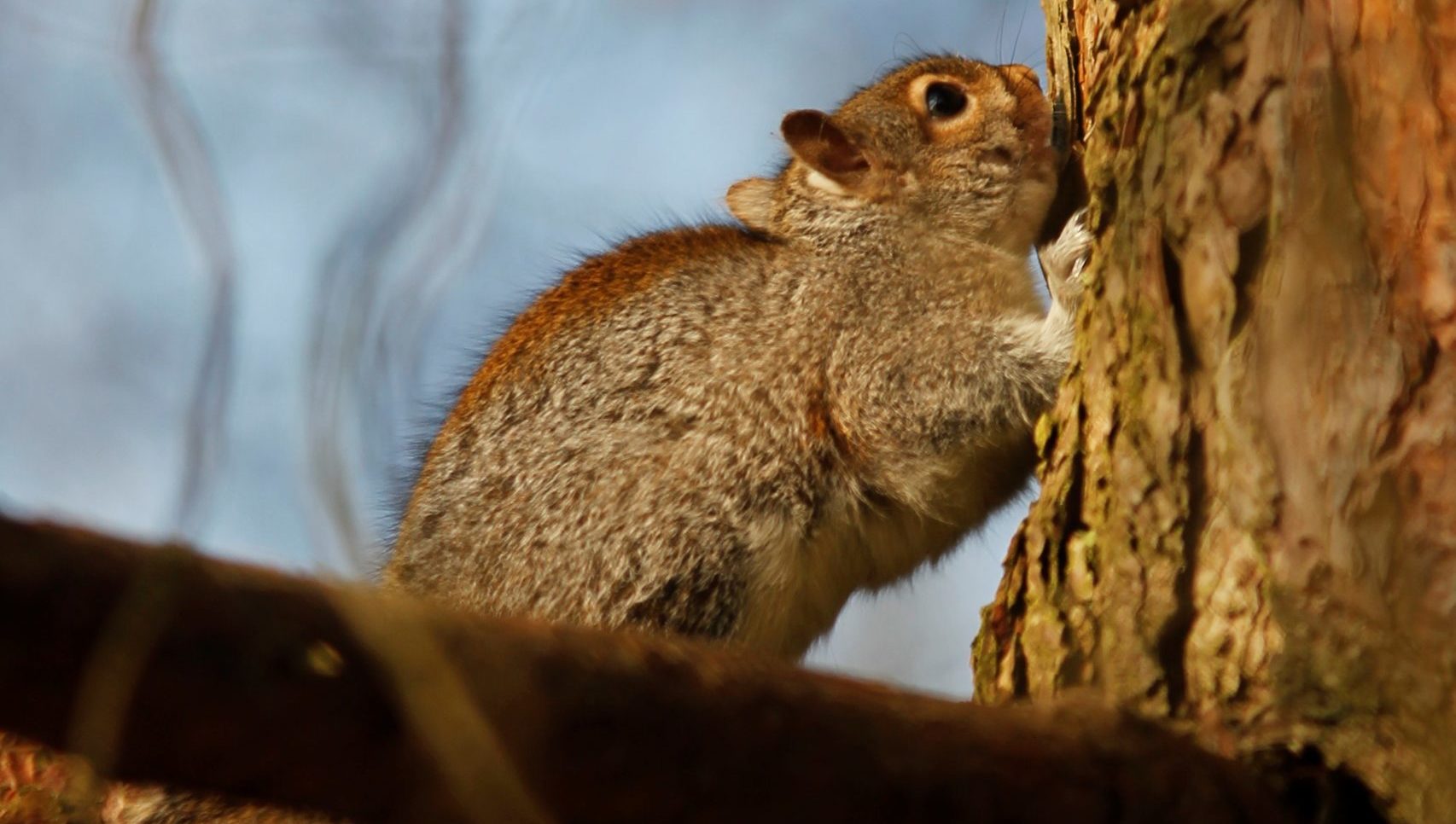Grey Squirrels threatening our woodlands to tune of £1.1bn
A new report by some of England and Wales’s largest forestry organisations, estimates grey squirrels will cost the sector at least £1.1 billion over the next 40 years – in damaged timber, lost carbon revenue, and tree replacement.

Damage by non-native grey squirrels is a major risk to the health of woodland.
Grey squirrels have an appetite for stripping the bark of young trees, an act which can kill the trees outright or damage them enough to allow infections in.
A new report by some of England and Wales’s largest forestry organisations, estimates grey squirrels will cost the sector at least £1.1 billion over the next 40 years – in damaged timber, lost carbon revenue, and tree replacements.
Land managers report a trend to avoid planting broadleaved tree species that are most vulnerable to grey squirrel damage, including oak, beech and sycamore. They argue the risks of grey squirrel damage and cost of mitigation can be too high to justify against final timber values for trees which often take 80-100 years to mature. This shift could also have impacts for woodland biodiversity.
Woodland owners have named the grey squirrel as the number one threat to their broadleaf woods, and the organisations say previous calculations of the costs of squirrel damage (£6-10m per annum) are a huge underestimate.
The report, Analysis of the Costs of Grey Squirrel Damage, was commissioned by the Royal Forestry Society (RFS) in partnership with Forestry Commission, National Resources Wales, the National Forest Company and Woodland Trust. It developed a repeatable methodology for calculating grey squirrel damage by taking into account not just lost timber value but reduced carbon capture, as well as damage mitigation and the costs of trees to replace those have died as a result of grey squirrel bark stripping.
The results show a wide range of values depending on assumptions. The ‘probable scenario’ estimates that grey squirrels are costing a total of £37m a year to the sector in England and Wales. Even this does not include a range of more hard-to-measure impacts such as on landscape, public health or treasured wildlife caused by tree loss and damage.
Royal Forestry Society Chief Executive, Simon Lloyd says: “Woodland creation is at the top of the forestry policy agenda, but many of those new trees will not survive to deliver the carbon capture or biodiversity objectives if grey squirrels cannot be controlled.
“If woodland owners are deterred from planting species such as oak within woodland mixes we may be looking at a loss of home-grown high-quality hardwood timber, further increasing a dependency on imports.”
Dan Small, Woodland Management Officer, National Forest Company, said: “We have been creating the National Forest in the Midlands for the past three decades, so many of our trees are vulnerable stage with regard to squirrel damage. We’re working with landowners to create a landscape-scale programme of control, to enable us to continue to plant productive woodlands which are accessible by people and provide a diverse habitat for wildlife. Grey squirrels jeopardise the woodlands coming to fruition.”
The report recommends additions to the National Forestry Inventory squirrel damage survey methods to improve the quality of data available to help land managers calculate the true costs of impacts on woodland; and to help develop appropriate and effective grey squirrel control policies.
The five report partners are all signatories to the UK Squirrel Accord (UKSA), a UK-wide partnership of 39 leading conservation and forestry organisations, Government agencies and companies.
Kay Haw, UKSA Director says: “This report by important UK Squirrel Accord signatories helps quantify the serious issue grey squirrel bark stripping is having on the UK’s broadleaf trees and the ecosystem services they provide. It also highlights the need for a better understanding of the impacts on biodiversity, through the loss of ecologically important tree species or a reluctance to plant them.”
Read the Report Overview and the Full Report here

